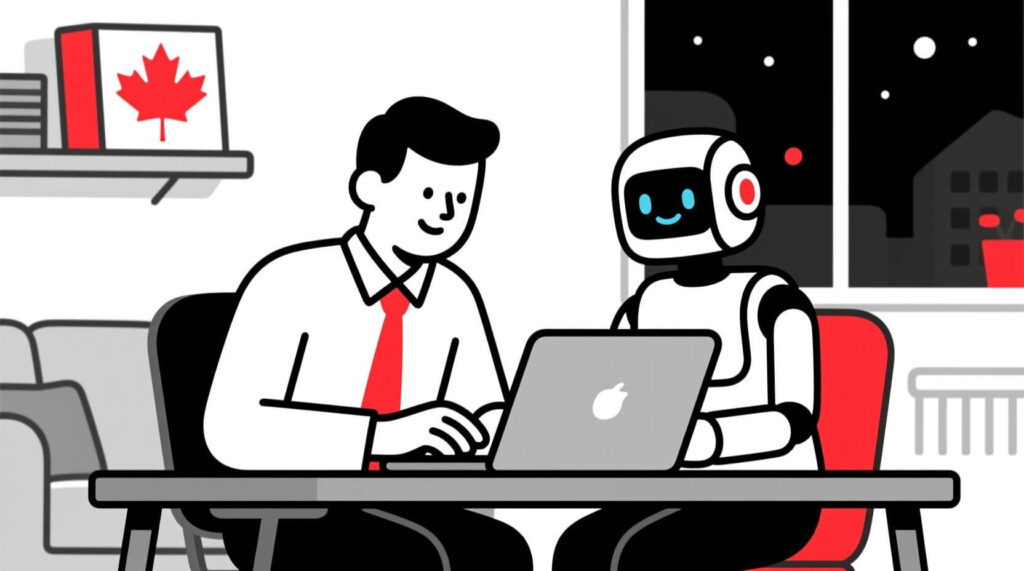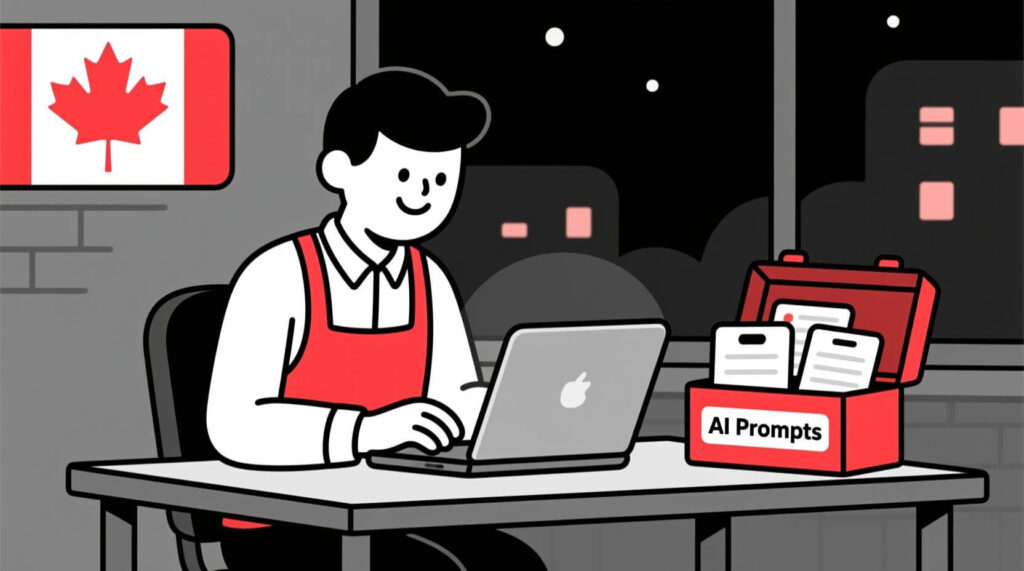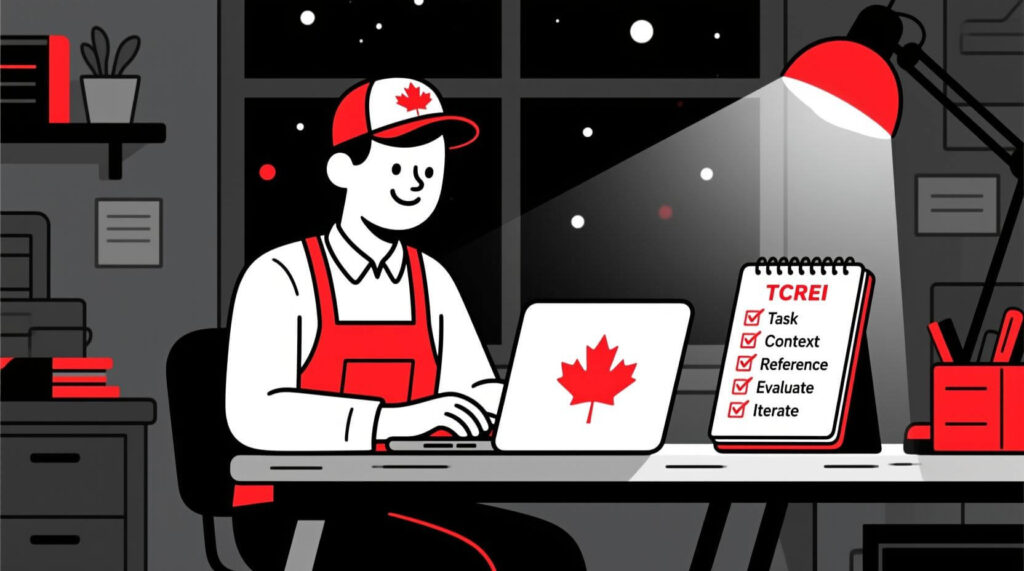
You’ve got one. Maybe it’s a list of 50 people, or maybe it’s a few hundred. They’re the email addresses you’ve collected from your website’s pop-up, from a sign-up sheet at your checkout counter, or from local events. They’re sitting in a spreadsheet or a Mailchimp account, quietly collecting digital dust and a little bit of guilt.
You know you should be emailing them. But every time you think about it, a wave of questions hits you: What would I even say? Will they think I’m spamming them? Who has the time?
If that sounds familiar, you’re not just a business owner—you’re a normal business owner. The fact is, 46% of Canadian small business owners feel overwhelmed by managing all their digital channels. Your email list ends up feeling like just another chore.
But that dusty list isn’t a chore. It’s a hidden goldmine. For every $1 you spend on email marketing, the average return is a staggering $36. It’s one of the single most profitable things you can do for your business. The problem? Hiring a pro to do it for you can cost $150 per email or more than $500 a month.
So, what’s the solution? Meet your new, affordable, expert email copywriter: AI. This article won’t just give you templates; it will give you a blueprint to turn that dusty list into an automated system that builds relationships and drives profit while you sleep.
The Hidden Goldmine in Your Business

Before we get to the “how,” let’s talk about the “why.” You need to be convinced that sending a few emails is worth your precious time. The numbers don’t lie.
The Undeniable ROI of Email Marketing
That $36 return for every $1 spent is a jaw-dropper. To put it in perspective, email marketing is often more than 14 times as effective as social media advertising. Why? Because you’re not shouting into the void of a social media feed. You’re speaking directly to people who have already raised their hand and said, “Yes, I want to hear from you.”
Why Your Customers Want to Hear From You
The biggest fear every business owner has is being “spammy.” But here’s the secret: your customers don’t mind getting emails. They mind getting bad, generic emails. The research is crystal clear: 72% of consumers say they only engage with personalized messaging, and nearly half of shoppers prefer to get promotional emails weekly from their favourite brands. They want to know about your new products, your special offers, and your story.
The Personalization Gap (and How AI Fills It)
The key to unlocking that $36 ROI is personalization. It’s the difference between an email that gets deleted and an email that gets opened. Just personalizing the subject line can boost open rates by 50%. The problem is, personalization takes time—time you don’t have.
This is where AI becomes your secret weapon. It allows you to create tailored, relevant, and effective emails at a scale and speed that was previously impossible for a small business.
The Automated Welcome Sequence: Your 24/7 Relationship Builder

Ready to start mining that gold? We’re not just going to write a few emails. We’re going to build a machine. An automated welcome sequence is a series of emails that goes out to every new subscriber automatically. You write them once with AI, set them up in your email software (like Mailchimp or ConvertKit), and they work for you 24/7, turning every new lead into a warm prospect.
Tool #1: The “Welcome Aboard” Email (Day 0)
This is the very first email a new subscriber gets, and it’s your most opened email by far. Its job is to be warm, confirm their subscription, and start building a relationship.
The “Welcome Aboard” Prompt (Copy & Paste This!)
Act as my friendly and professional email copywriter. Using my brand voice [remind it of your 3-5 tone words, e.g., "friendly, professional, a little bit funny"], write a welcome email for new subscribers.
The email should:
1. Have a warm and inviting subject line.
2. Thank them for signing up.
3. Briefly re-introduce my business, [Your Business Name], and our core mission.
4. Tell a very short story about why I started this business.
5. Let them know what kind of emails to expect from me (e.g., "tips, new product announcements, and special offers").Tool #2: The “Value-First” Email (Day 2)
This email’s only job is to be helpful. No selling. You’re going to give them a quick win, a valuable piece of advice that builds trust and establishes your expertise. This makes them want to open your next email.
The “Value-First” Prompt (Copy & Paste This!)
Act as my expert, helpful copywriter. I need to write the second email in my automated welcome sequence. The goal is pure value and trust-building.
Please write a short, helpful email that shares one of [Your Best Tip, a Surprising Fact, or a Common Mistake to Avoid] related to my business/industry.
The email should be framed as a quick, helpful piece of advice. It must not contain any sales pitch or call to action to buy something.Tool #3: The “Gentle Nudge” Promotional Email (Day 4)
Now that you’ve welcomed them and provided value, you’ve earned the right to make an offer. This is your money-maker. The key is to focus on the customer’s problem, not just your product.
The “Gentle Nudge” Prompt (Copy & Paste This!)
Act as my expert direct-response copywriter. I need the third email in my welcome sequence. This email will introduce my [Product/Service Name].
Please structure the email using the "Problem-Agitate-Solution" framework:
1. Problem: Start by describing a common problem or frustration that my ideal customer experiences.
2. Agitate: Gently expand on that problem. Why is it so annoying? What are the consequences of not solving it?
3. Solution: Introduce my [Product/Service Name] as the perfect solution to this specific problem. Clearly explain 2-3 key benefits (not just features) and how it makes their life better.
4. End with a clear, single call-to-action to "Learn More" or "Shop Now" on my website.Bonus Tool: The “One-to-Many” Campaign Creator

Once your welcome sequence is running, you’ll want to send regular emails (or “campaigns”). Here’s the rockstar move: you don’t need dozens of ideas. You just need one good idea, which AI can turn into a whole campaign.
Canadian AI Guy’s Pro Tip: This is how you create a month’s worth of content in an afternoon. Take one customer success story, one detailed project, or one common question you get, and run it through this prompt.
The “Campaign Creator” Prompt (Copy & Paste This!)
Act as my expert marketing strategist and copywriter. I want to create a 3-part email mini-campaign based on a single core idea.
My Core Idea is: [Describe your single idea in detail. For example: "A recent customer, a bakery, used my consulting service to reorganize their kitchen flow and ended up saving 10 hours a week."]
Now, generate a 3-part email campaign based on this idea:
- Email 1 (The Teaser): Write an email that introduces the *problem* from the core idea (e.g., "The hidden time-wasters in every commercial kitchen"). Tease that you have a solution coming in the next email.
- Email 2 (The Story/Solution): Write an email that tells the full story from the core idea. Explain how the problem was solved and detail the amazing results (e.g., the 10 hours saved).
- Email 3 (The Direct Offer): Write a short, direct email that connects the story to my service. It should reference the success story and make a clear offer for the reader to achieve similar results by booking a call or buying my product.

